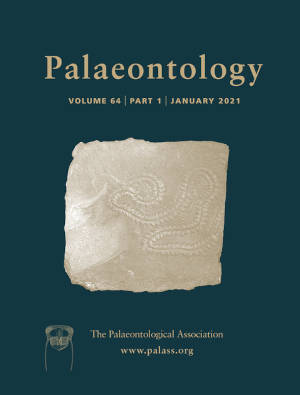Reg. Charity No. 1168330

Phytosaurs are a group of large, semi‐aquatic archosaurian reptiles from the Middle–Late Triassic. They have often been interpreted as carnivorous or piscivorous due to their large size, morphological similarity to extant crocodilians and preservation in fluvial, lacustrine and coastal deposits. However, these dietary hypotheses are difficult to test, meaning that phytosaur ecologies and their roles in Triassic food webs remain incompletely constrained. Here, we apply dental microwear textural analysis to the three‐dimensional sub‐micrometre scale tooth surface textures that form during food consumption to provide the first quantitative dietary constraints for five species of phytosaur. We furthermore explore the impacts of tooth position and cranial robustness on phytosaur microwear textures. We find subtle systematic texture differences between teeth from different positions along phytosaur tooth rows, which we interpret to be the result of different loading pressures experienced during food consumption, rather than functional partitioning of food processing along tooth rows. We find rougher microwear textures in morphologically robust taxa. This may be the result of seizing and processing larger prey items compared to those captured by gracile taxa, rather than dietary differences per se. We reveal relatively low dietary diversity between our study phytosaurs and that individual species show a lack of dietary specialization. Species are predominantly carnivorous and/or piscivorous, with two taxa exhibiting slight preferences for ‘harder’ invertebrates. Our results provide strong evidence for higher degrees of ecological convergence between phytosaurs and extant crocodilians than previously appreciated, furthering our understanding of the functioning and evolution of Triassic ecosystems.
AcknowledgementsThanks to P. Campbell, M. Carnall, T. Davidson, E. Maxwell, B. Mueller, A. Resetar, C. Sheehy and A. Wynn for specimen access. Thanks to W. Parker and M. Stocker for their comments as reviewers and to L. Porro and S. Thomas for editorial improvements. This work was funded by a NERC studentship awarded through the Central England NERC Training Alliance (CENTA; grant reference NE/L002493/1) and the University of Leicester to JB, and a NERC studentship awarded through the Central England NERC Training Alliance (CENTA; grant reference NE/L002493/1) and the University of Birmingham to ASJ. JB was also supported by a Leverhulme Trust Research Project Grant (RPG‐2019‐364) during the completion of the project.